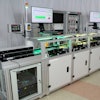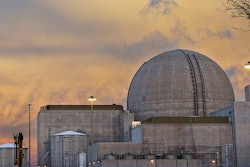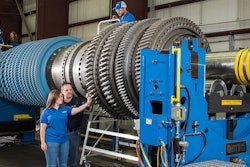Poor lighting in industrial facilities can lead not only to high energy costs, but also safety hazards, workplace accidents, as well as worker stress and fatigue. With lighting typically representing 37% of an industrial plant’s electricity expenses according to U.S Energy Information Administration (EIA), it doesn’t come cheap. The latest technology, in the form of energy-saving smart lighting controls, is changing the way industrial plants are lit, helping US companies drive down energy costs and create safer and more sustainable working environments.
Despite calls to reduce energy consumption in such buildings, and comply with strict safety standards, lighting within industrial facilities often operates using outdated and ineffective technologies – with lights controlled with nothing more than a selection of on-off switches. This can make lighting extremely inefficient to control and also costly to operate.
The layout of industrial plants and warehouses can present an extensive challenge when it comes to lighting. Buildings often have complex layouts, combining manufacturing areas containing large expanses of machinery, high racking zones as well as walkways for employees, making effective lighting a considerable undertaking. Add to this, the fact that each area often requires varying lighting levels, dependent on the task being undertaken, and the challenge only gets harder.
For instance, manufacturing zones must be brightly illuminated and free from flickering light and shadows at all times in order to ensure employee safety. While racking areas may only require lights to be switched on when they are in use. Some areas operate on a 24/7 basis, whereas others, such as storage areas, remain largely unoccupied.
Previously, companies have been deterred by the drawbacks of adopting more controllable options due to the capital cost, operational down time, intricate installation, and the complex layout of the facilities. For many industrial facilities these obstacles meant that, economically, lighting control solutions were simply not viable options.
The latest wireless lighting control technologies, however, are transforming the way industrial facilities are lit. Facilities managers, swayed by their simple retrofit capabilities, advanced control options and ease of use, are increasingly adopting wireless lighting controls in their facilities and reaping both the financial and operational rewards.
A Switch To LED
Although significant savings can be made by making a switch from metal halides to energy-efficient LED luminaires, by combining these with wireless lighting control technology, the benefits can be maximised in the long-term. Offering greater levels of efficiency, longer lifespans, lower failure rates and greater controllability, LED luminaires are rejuvenating industrial lighting and helping to reduce costs across America.
The reduced energy output of LED luminaires can be particularly beneficial for industrial plants, but without an effective control strategy in place, savings are typically limited to the short term. This is where wireless lighting controls are becoming more prominent, allowing manufacturers to wirelessly monitor and manage interior lighting with multi-site control from a single hub. By maximising the highly controllable nature of LED technology, savings can be exploited in the long-run.
New generation systems put energy control firmly in the palm of the controller’s hand. Using cloud-based wireless technology, lighting can be configured, controlled and monitored from one dashboard, or Graphic User Interface (GUI) all through a laptop, a tablet or even a smartphone. By the very nature of being wirelessly enabled, innovative systems allow for a simple and smooth installation and commissioning process – significantly reducing unnecessary stoppages in plant operations and ultimately saving customers money.
Not only can users gain access to an abundance of real time data on energy consumption, carbon emissions and savings achieved, but they can also begin to implement further control strategies to enhance energy reductions.
Enhanced Savings
Through wireless control systems, luminaires can be switched on, dimmed collectively or individually, and scheduled to activate when required. Industrial plant managers can also set up custom time profiles around the times of day or night to suit the facilities day-to-day operations. This means industrial plants that have a need for lower levels of lighting during non-operational hours, can gain complete control of lighting at all times of day or night. This ensures the right level of light is delivered at the right time, to the right location. Maintenance costs can also be kept to a minimum as users can proactively oversee their portfolio of lighting and identify issues, such as luminaire failures, through the GUI.
Savings can be further enhanced through the installation of occupancy detectors, which can be linked to the control platform. By strategically locating PIR sensors in expanses of the facility such as racking areas, lighting can be activated only when needed – creating a path of light for workers in the building. This not only safeguards the health and safety of employees, but also results in additional energy savings.
For facilities managers, such systems represent a significant step towards providing total facility automation. A typical industrial facility comprises a high number of metal halide high-bay lighting fixtures, each operating at around 460 watts, with lights ordinarily only switched on and off at a main switchboard – leading to excessive energy costs.
Optimizing Industrial Lighting
Reducing energy costs, carbon emissions and gaining greater multi-site control of their facilities remains a major objective for many leading companies. Previously unattainable for many facilities managers, such goals are now becoming a reality for many industrial plant operator’s thanks by wireless lighting control technology.
The opportunities wireless lighting control systems open up for industrial plant managers to save energy are significant. As a result, corporations across the US, especially those with multiple facilities located throughout the country, are turning to wireless lighting control systems to realize the potentially impressive results they can achieve.
Antony Corrie is president of worldwide sales at Harvard Technology, a manufacturer wireless lighting control systems.























